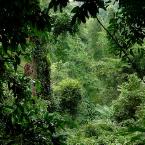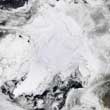 Biodiversity continues its steady decline. A team of scientists have this week published a study in Science confirming that fact. Governments in 2002 at a summit on the Convention on Biological Diversity agreed to aim to halt biodiversity loss by the year 2010. When experts meet in Nairobi on May 10 it will be to face the news that they have failed. For example, since 1970 the world’s animal population has decreased by 30%, mangroves and sea grasses have shrunk in area by 20%, and live-coral coverage has fallen by 40%. “The state of biodiversity is definitely showing a rapid decline,” says Matt Foster, one of the lead authors on the Sciencepaper. “And the pressure just keeps increasing.”
Biodiversity continues its steady decline. A team of scientists have this week published a study in Science confirming that fact. Governments in 2002 at a summit on the Convention on Biological Diversity agreed to aim to halt biodiversity loss by the year 2010. When experts meet in Nairobi on May 10 it will be to face the news that they have failed. For example, since 1970 the world’s animal population has decreased by 30%, mangroves and sea grasses have shrunk in area by 20%, and live-coral coverage has fallen by 40%. “The state of biodiversity is definitely showing a rapid decline,” says Matt Foster, one of the lead authors on the Sciencepaper. “And the pressure just keeps increasing.”
It’s not that governments have made no efforts. The amount of protected land has steadily increased around the world, as has the area of sustainably managed forests. Increased money is being spent on biodiversity aid. But we’re still shouldering other species out of our way. And in doing so we’re attacking our own well-being. “We all benefit from biodiversity and we all hurt when it’s lost,” says Foster.
Climate change is only one of the ways in which humankind is contributing to biodiversity loss. But it’s worth reminding ourselves that it is seriously exacerbating the process. I’ve been re-reading a fine book by Michael Novacek, Terra, published in 2007. He’s a distinguished paleontologist, Provost of Science at the American Museum of Natural History. He was involved in the splendid Darwin exhibition put together by the Museum of Natural History which I was fortunate to be able to see when it was brought to the Auckland Museum in 2007. That’s when I bought his book. It’s subtitled Our 100-Million-Year-Old Ecosystem –- and the Threats That Now Put It at Risk. I think some points from his chapter on how the current warming is contributing to biodiversity loss are worth recounting here.
He notes changes in the activity of 694 species whose life history data between 1951 and 2001 has been studied. A 2003 review found on average the species were either breeding, blooming, or doing other seasonally related activities 5.3 days earlier each decade.
The warming trend has also set species in motion. Some move poleward. Other species have moved upslope. Some have simply contracted and their surviving, marginalised populations have been reduced to precariously low levels.
Novacek is interesting on the evolutionary processes at work in the organisms affected by rapid alteration of range. The hardy colonisers which often establish at the leading edge of the shift may have a very low level of gene diversity, leaving them susceptible to further environmental changes. The populations at the trailing edge of the migration may have more genetic diversity, but they will start to fragment as the environmental conditions break up their preferred habitats. The rate of environmental challenge may determine how a population’s genetic makeup and evolution are transformed. Slow change may be easier for the species to maintain genetic diversity at levels that allow it to persist. Drastic and rapid change make it more vulnerable. Simply moving to a cooler habitat does not guarantee that the genetic composition of the migrating populations will be robust enough to sustain them.
It’s made more complex by the bewildering diversity of examples in nature. Some species, especially in tropical and mountainous regions, may be buffered by the amount of genetic variation already resident in their populations. Other genetic studies suggest that climate change has easily outrun the rate at which a given population can adjust.
Novacek sees contemporary evidence that climate change in combination with other factors is killing off certain species. It seems to be the coup de grace for some coral species. Increasing ocean acidification also plays a part in the demise of coral and threatens the most abundant and ecologically important sea organisms, the coccolithophorids, foraminifera and pteropods which are vitally important food for many fish.
On land, organisms that live in lakes, streams, rivers, and other bodies of freshwater are highly endangered and are especially susceptible to climate change because they cannot escape its effects, being captive in their habitat.
Most threatened are the habitats and species at high latitudes, the northern tundra and polar deserts such as those on the Arctic islands and Antarctica as well as species inhabiting high Alpine or montane habitats at middle to low latitudes.
I liked the last sentence of his chapter. In the preceding sentences he noted what he regarded as encouraging signs of acceptance of the science of global warming. He recorded, however, still encountering individuals normally open to the discoveries of science who find it beyond belief that humans could disrupt the balance of the planet in such an enormous way. The final sentence: “But science has eventually convinced us before of the unbelievable.”
Like this:
Like Loading...
 Climate change involves more than straightfoward warming, it also affects the patterns of weather and the seasons, as John Parker discovers in an excellent feature — What’s happened to the seasons? — in the Spring issue of The Economist’s Intelligent Lifemagazine. Parker’s done his homework, and his article is the best overview of recent changes in seasonal weather around the world, and the knock on impacts on agriculture and ecosystems that I’ve read. Here’s a sample:
Climate change involves more than straightfoward warming, it also affects the patterns of weather and the seasons, as John Parker discovers in an excellent feature — What’s happened to the seasons? — in the Spring issue of The Economist’s Intelligent Lifemagazine. Parker’s done his homework, and his article is the best overview of recent changes in seasonal weather around the world, and the knock on impacts on agriculture and ecosystems that I’ve read. Here’s a sample:
 Biodiversity continues its steady decline. A team of scientists have this week published a study in Science confirming that fact. Governments in 2002 at a summit on the
Biodiversity continues its steady decline. A team of scientists have this week published a study in Science confirming that fact. Governments in 2002 at a summit on the 
 Another week,
Another week,  It was a happy experience to open the Waikato Times last week and see across from the editorial page the profile of scientist Jim Salinger under the headline Salinger doesn’t feel critics’ heat. The
It was a happy experience to open the Waikato Times last week and see across from the editorial page the profile of scientist Jim Salinger under the headline Salinger doesn’t feel critics’ heat. The